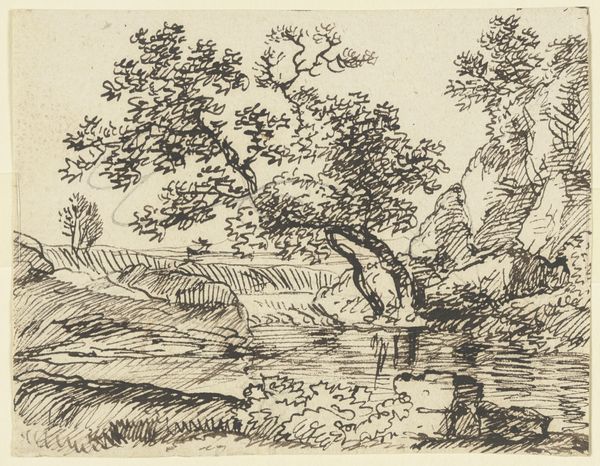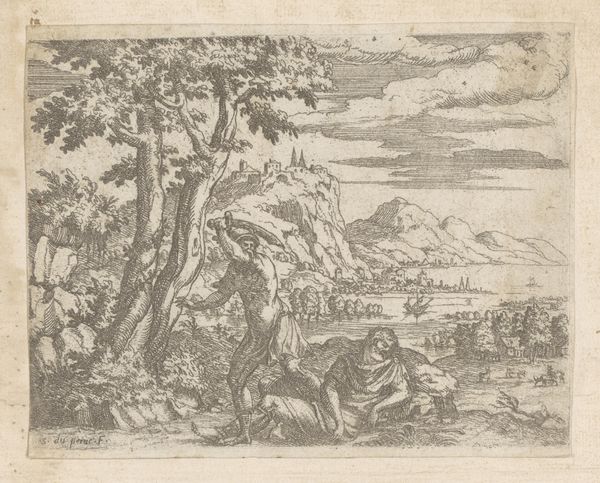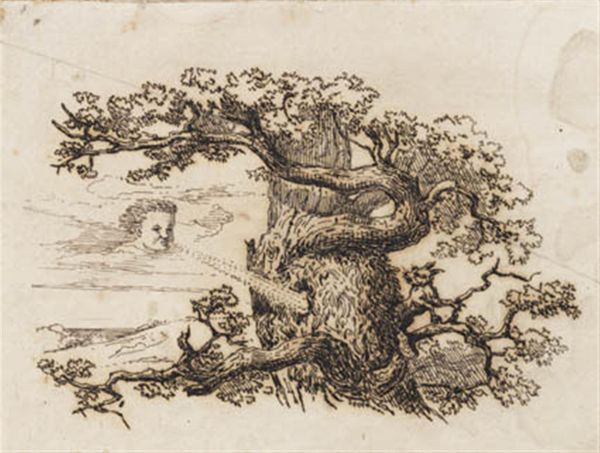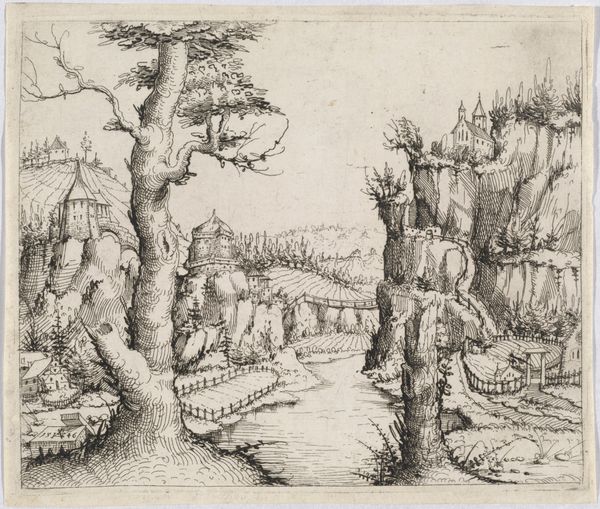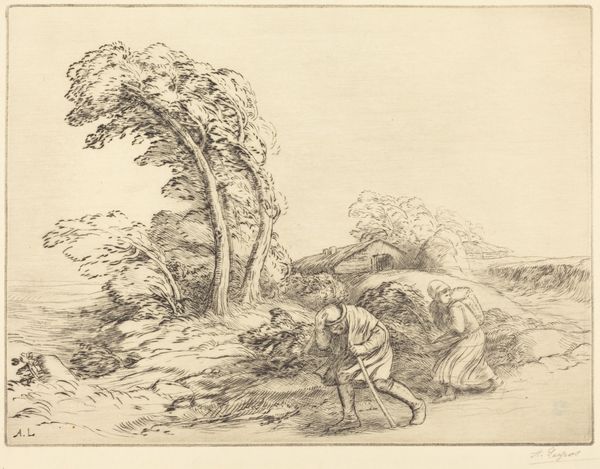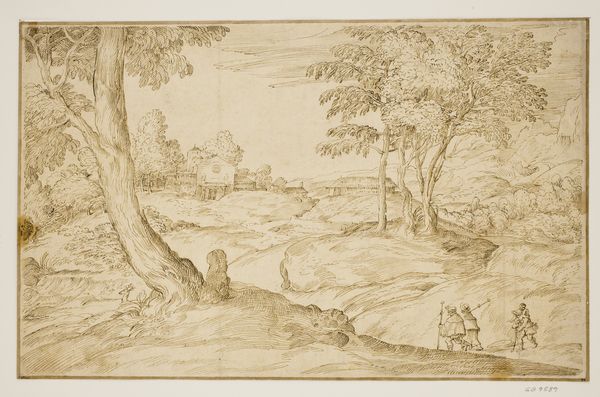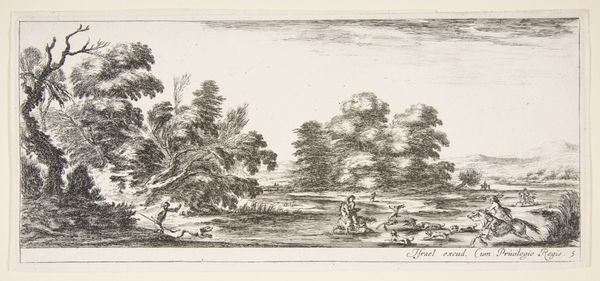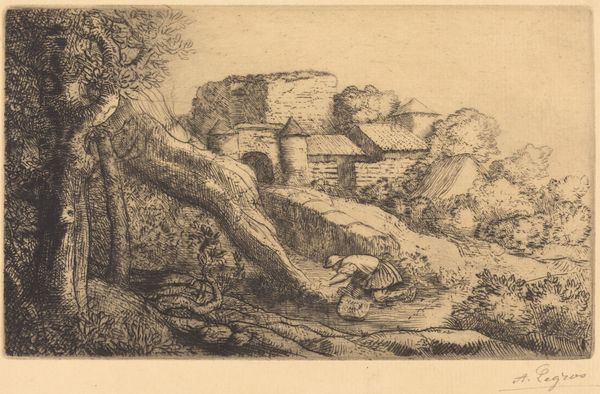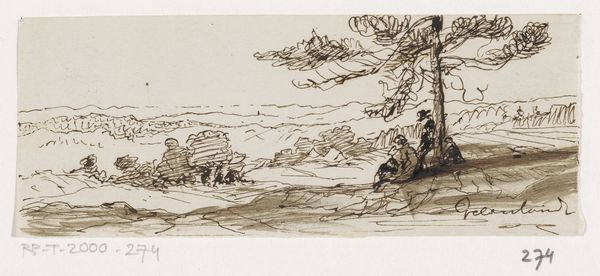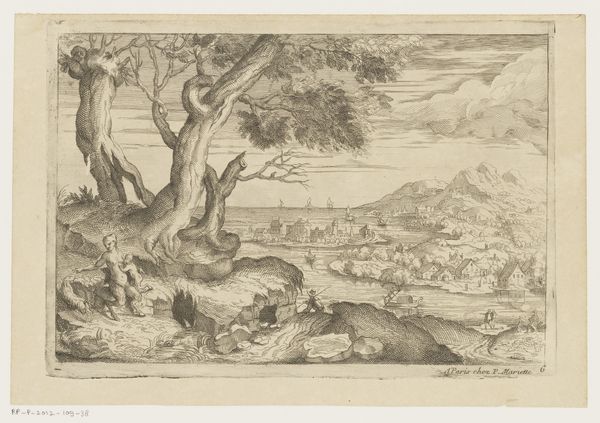
drawing, print, etching, ink
#
drawing
#
ink drawing
# print
#
etching
#
landscape
#
figuration
#
ink
#
history-painting
#
northern-renaissance
Dimensions: 6 1/2 x 11 in. (16.51 x 27.94 cm) (plate)
Copyright: Public Domain
Curator: Augustin Hirschvogel's etching, "Duck Shooting with Firearms," created around 1545, invites us into a seemingly simple scene. Editor: Initially, I'm struck by the tranquility of the landscape contrasted with the hunter’s intent. It feels like a commentary on human intervention in nature, that quiet tension. Curator: Hirschvogel's choice of etching highlights the societal shifts of the Renaissance. Gunpowder technology was rapidly altering the balance of power and our relationship to the natural world. This print situates hunting not just as sport, but as part of a broader transformation where human actions began to carry significantly altered ecological weight. Editor: I see a symbolic representation of control, certainly. Look at how the artist positions the hunter, elevated above the prey and framed by the gnarled tree—a sort of throne, perhaps representing mastery, power over the world contained in that serene waterway. And note the sleeping dog...loyalty, complacency? Curator: Indeed, the landscape, rendered with such detail, hints at both the abundance and the vulnerability of the natural world. We might also consider class and privilege: who has the right to hunt, and what does that say about social structures of the time? Access to weaponry amplified existing disparities. Editor: It makes you wonder about the role of firearms then. Before industrial scale killing. And what "duck hunting" may have meant at this specific place in history, not necessarily about sustenance, it's something else that reflects the changing relations with nature and social change. The dog at rest really is a subtle marker. I'm guessing a hunting dog could have different representation than, let's say, a royal canine figure. Curator: Considering his Northern Renaissance background, it's hard not to see echoes of the changing roles that the Church began playing at the time of its creation and how different that period in history can feel to different classes and types of person. What I appreciate most is the invitation it makes for dialogue on sustainability and who is responsible. Editor: For me, it reveals the layers of meaning we can find in even the most outwardly simple of images when you dig into the rich symbol set available in a 16th century context.
Comments
No comments
Be the first to comment and join the conversation on the ultimate creative platform.
